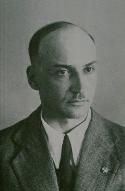Filippo Zappata

Filippo Zappata (6 July 1894 – 30 August 1994)[1] was an Italian engineer and aircraft designer.
Life[]
Zappata was born in Ancona in 1894. He worked for , Cantieri Riuniti dell'Adriatico (CANT), Blériot, Breda, and Agusta.
In the 1930s the engineer Filippo Zappata designed a series of successful multi-engined hydroplanes such as the CANT Z.501 flying boat, CANT Z.506 floatplane, and CANT Z.1007 medium bomber.[citation needed] In association with test pilot Mario Stoppani, Zappata's designs flew 15 first flights[clarification needed] and set 41 world aeronautical records.[2]
In the early 1940s he designed a large four-engined airliner, the Breda-Zappata BZ.308, but the project was initially abandoned and only one airplane was produced after WW2.[3]
The B.Z.308 was a four-engined civil transport developed -as a project- initially by fascist Italy for operation over both European and transatlantic routes.
First of all the long gestation of this aircraft must be highlighted, initially due to the fact that it was conceived by engineer Filippo Zappata in 1942, still during wartime, with all the problems connected to the priorities of the moment; so much so that on 8 September 1943 only the prototype fuselage (of the BZ.308) was built. In the period 1944-45 the work was blocked first by the Germans and, at the end of the conflict, by the Allies, whose Allied Armistice Commission forbade the continuation of any aeronautical project until the beginning of 1946.Vincenzo Meleca
A single airplane was finally built in 1948 -the only one created in Italy for long range commercial service- and was used between Italy and Italian Somalia in the 1950s.[4]


Indeed on 27 August 1948 the Bz 308 made its maiden flight in front of civil and military authorities, politicians and the Italian President. The prototype, which passed to the Italian Air Force in 1950, was used to fly between Rome and Mogadishu until 21 February 1954, when it was damaged beyond repair by a collision with a cement truck, and was abandoned in a field in Somalia before being broken up.[5]
It was also the first Italian transatlantic aircraft, and the first aircraft to fly into the new Malpensa airport in 1948.
Filippo Zappata died at Gallarate in 1994, at the age of 100.
Endnotes[]
- ^ "ZAPPATA FILIPPO". Il Portale dell'Aeronautica Militare - Le schede. Ministero Della Difesa. May 9, 2002. Retrieved 2008-05-12.
- ^ Franks 1997, p. 161.
- ^ The Illustrated Encyclopedia of Aircraft (Part Work 1982–1985). Orbis Publishing.
- ^ History of the BZ.308 (in Italian)
- ^ "Breda-Zappata BZ.308" Aviation Safety
References[]
- Franks, Norman; Guest, Russell; Alegi, Gregory. Above the War Fronts: The British Two-seater Bomber Pilot and Observer Aces, the British Two-seater Fighter Observer Aces, and the Belgian, Italian, Austro-Hungarian and Russian Fighter Aces, 1914–1918: Volume 4 of Fighting Airmen of WWI Series: Volume 4 of Air Aces of WWI. Grub Street, 1997. ISBN 1-898697-56-6, ISBN 978-1-898697-56-5.
See also[]
- Breda-Zappata BZ.308
- CANT Z.501
- CANT Z.506
- CANT Z.1007
- 1894 births
- 1994 deaths
- People from Ancona
- Italian aerospace engineers
- Italian centenarians
- Men centenarians
- Italian scientist stubs